
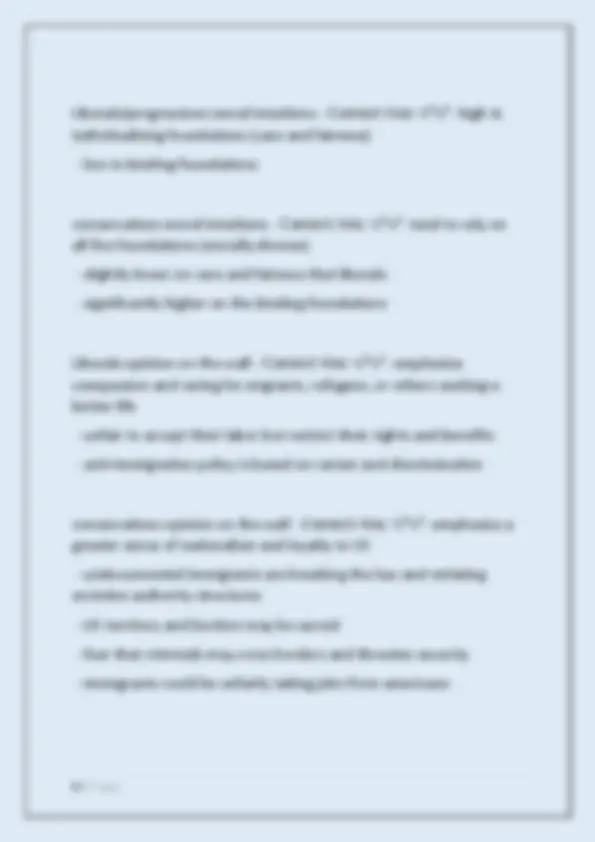
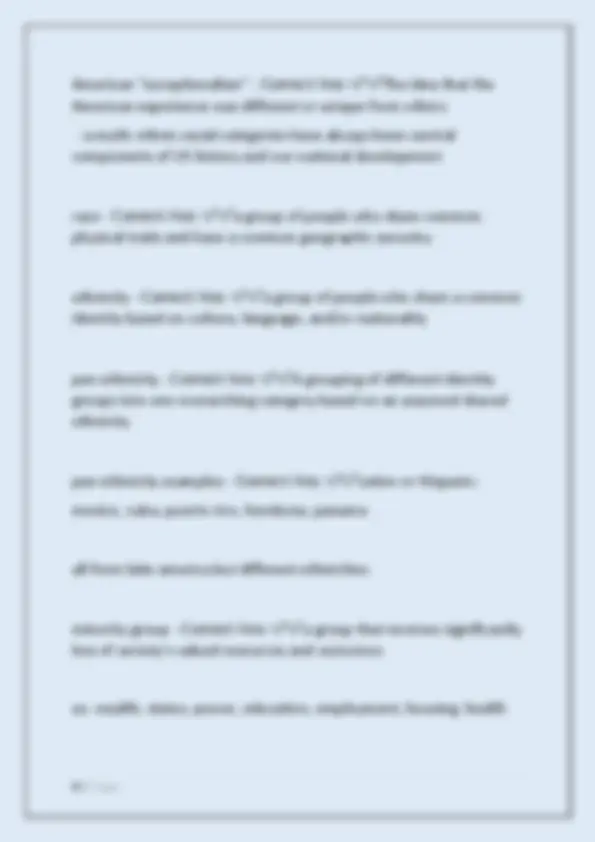
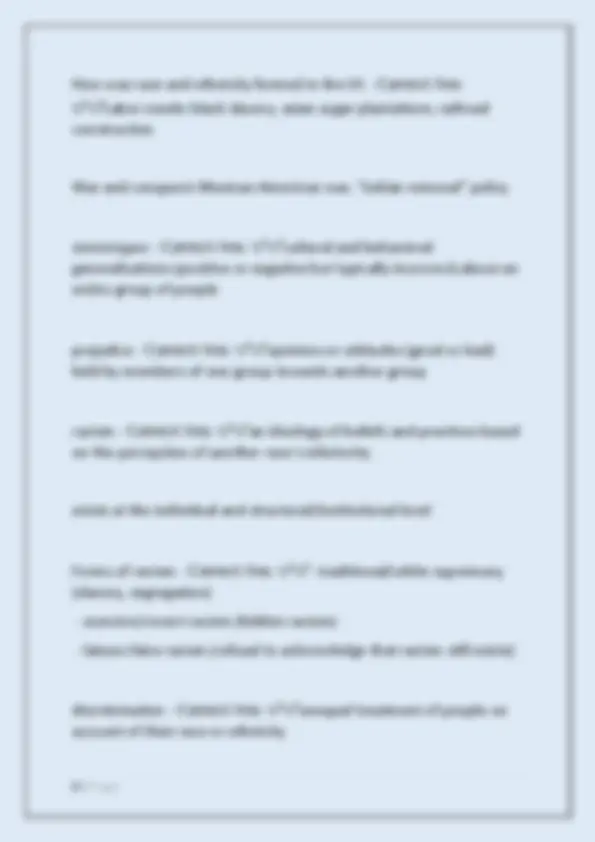
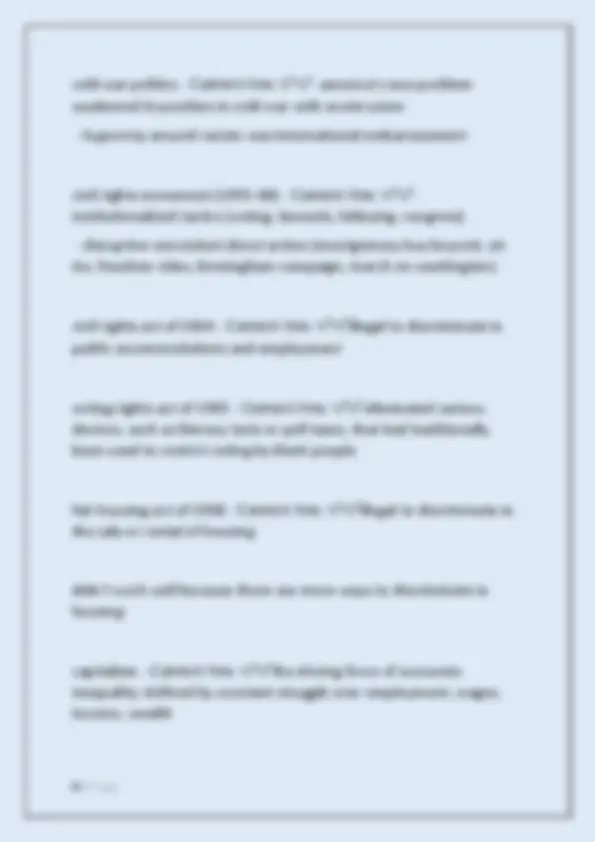
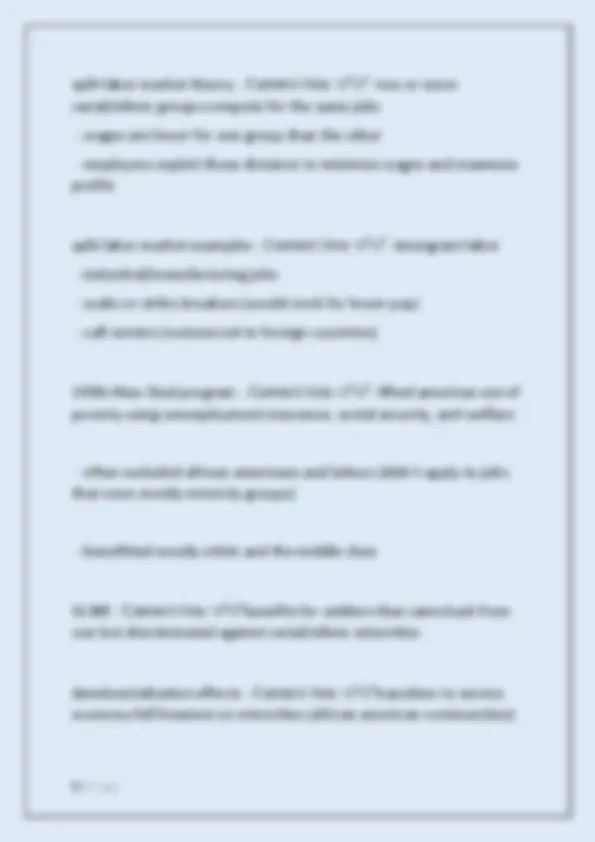
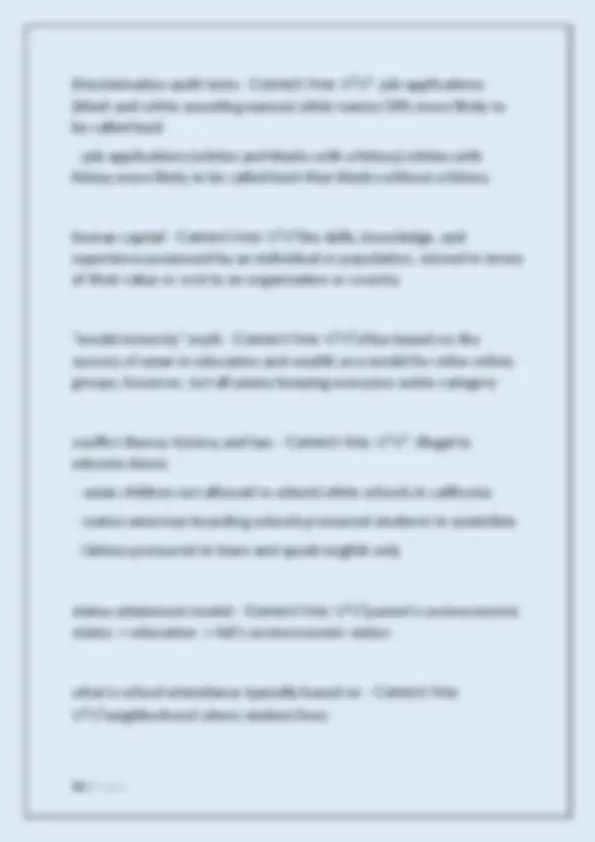
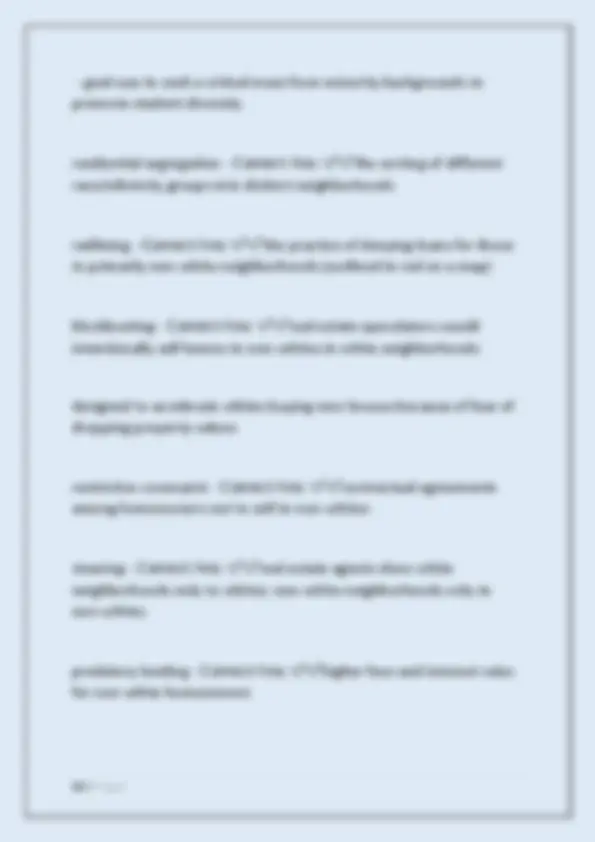
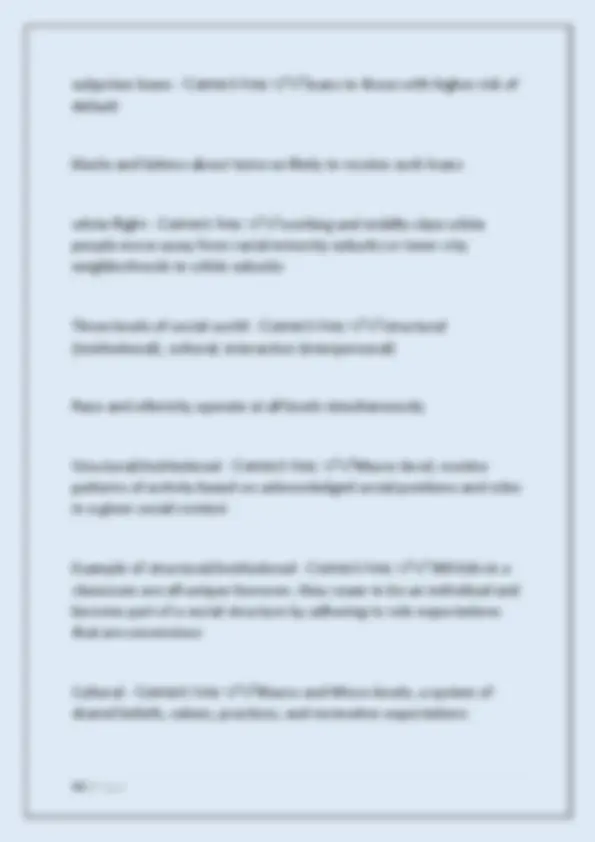
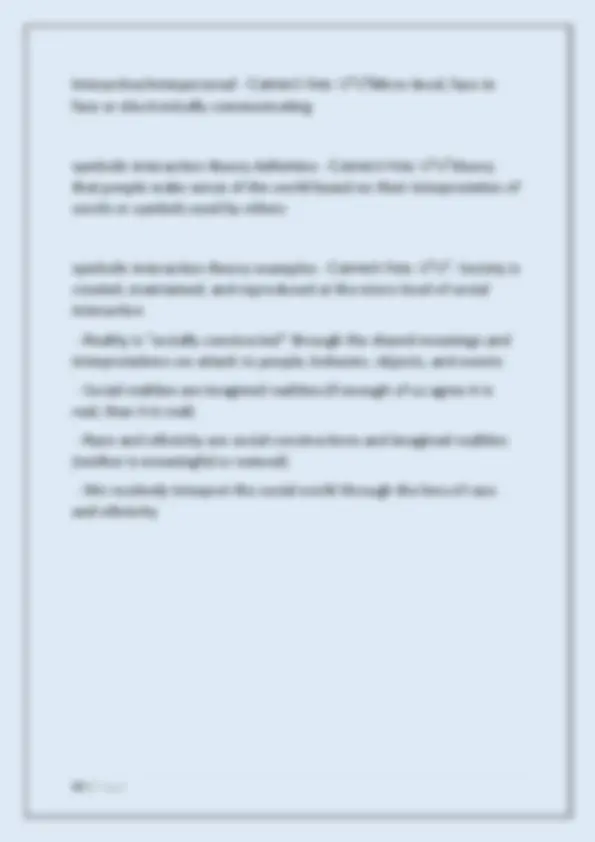


Study with the several resources on Docsity

Earn points by helping other students or get them with a premium plan


Prepare for your exams
Study with the several resources on Docsity

Earn points to download
Earn points by helping other students or get them with a premium plan
Community
Ask the community for help and clear up your study doubts
Discover the best universities in your country according to Docsity users
Free resources
Download our free guides on studying techniques, anxiety management strategies, and thesis advice from Docsity tutors
A comprehensive overview of key sociological concepts, including conflict theory, functionalism, and social inequality. It explores the foundations of moral sentiments, examines the role of race and ethnicity in shaping american society, and delves into the historical context of the civil rights era. The document also discusses the impact of economic and demographic changes on social inequality, highlighting the persistence of racial and ethnic disparities in education, employment, and wealth.
Typology: Exams
1 / 15

This page cannot be seen from the preview
Don't miss anything!










Conflict theory definition - Correct Ans: ✅✅a theoretical framework in which society is viewed as composed of groups that are competing for scarce resources
conflict theory examples - Correct Ans: ✅✅- emphasis on power, domination, and inequalities between the "have more" and the "have less"
Functionalist theory definition - Correct Ans: ✅✅theory emphasizing that society is made up of interrelated parts each with a particular role or function to get the job done
functionalist theory examples - Correct Ans: ✅✅- Emphasis on social order, stability, and cohesion
Where do our moral sentiments come from? - Correct Ans:
✅✅innateness and social environment (nature and nurture)
5 Fundamental Moral Foundations - Correct Ans:
✅✅Individualizing: Care/harm, fairness/cheating
Binding: loyalty/betrayal, authority/subversion, sanctity/degradation
Care/harm - Correct Ans: ✅✅- treating others with compassion and kindness
fairness/cheating - Correct Ans: ✅✅- the golden rule
loyalty/betrayal - Correct Ans: ✅✅- tribalism
authority/subversion - Correct Ans: ✅✅- our tendency to accept legitimate hierarchies and to obey people in higher positions
sanctity/degredation - Correct Ans: ✅✅- elevation of sacred things that transcend our individual interests or desires
American "exceptionalism" - Correct Ans: ✅✅The idea that the American experience was different or unique from others
race - Correct Ans: ✅✅a group of people who share common physical traits and have a common geographic ancestry
ethnicity - Correct Ans: ✅✅a group of people who share a common identity based on culture, language, and/or nationality
pan-ethnicity - Correct Ans: ✅✅A grouping of different identity groups into one overarching category based on an assumed shared ethnicity
pan-ethnicity examples - Correct Ans: ✅✅Latino or Hispanic:
mexico, cuba, puerto rico, honduras, panama
all from latin america but different ethnicities
minority group - Correct Ans: ✅✅a group that receives significantly less of society's valued resources and outcomes
ex. wealth, status, power, education, employment, housing, health
How was race and ethnicity formed in the US - Correct Ans:
✅✅Labor needs: black slavery, asian sugar plantations, railroad construction
War and conquest: Mexican-American war, "indian removal" policy
stereotypes - Correct Ans: ✅✅cultural and behavioral generalizations (positive or negative but typically incorrect) about an entire group of people
prejudice - Correct Ans: ✅✅opinions or attitudes (good or bad) held by members of one group towards another group
racism - Correct Ans: ✅✅an ideology of beliefs and practices based on the perception of another race's inferiority
exists at the individual and structural/institutional level
Forms of racism - Correct Ans: ✅✅- traditional/white supremacy (slavery, segregation)
discrimination - Correct Ans: ✅✅unequal treatment of people on account of their race or ethnicity
critiques of white privilege - Correct Ans: ✅✅- unnecessarily confrontation/accusatory language
When was the Civil Rights Era? - Correct Ans: ✅✅1954-
civil rights era economic and demographic changes - Correct Ans:
✅✅economic: reduced demand for rural labor, increase in manufacturing industries
demographic: in south movement from rural to urban areas, movement from southern to northern cities
1950s political parties - Correct Ans: ✅✅??? check slides
Supreme court before 1954 - Correct Ans: ✅✅slowly increasing constitutional protection for racial minorities
Brown v Board of education (1954) - Correct Ans: ✅✅- school segregation unconstitutional
cold war politics - Correct Ans: ✅✅- america's race problem weakened its position in cold war with soviet union
civil rights movement (1955-68) - Correct Ans: ✅✅- institutionalized tactics (voting, lawsuits, lobbying, congress)
civil rights act of 1964 - Correct Ans: ✅✅illegal to discriminate in public accommodations and employment
voting rights act of 1965 - Correct Ans: ✅✅eliminated various devices, such as literacy tests or poll taxes, that had traditionally been used to restrict voting by black people
fair housing act of 1968 - Correct Ans: ✅✅illegal to discriminate in the sale or rental of housing
didn't work well because there are more ways to discriminate in housing
capitalism - Correct Ans: ✅✅the driving force of economic inequality; defined by constant struggle over employment, wages, income, wealth
Discrimination audit tests - Correct Ans: ✅✅- job applications (black and white sounding names) white names 50% more likely to be called back
human capital - Correct Ans: ✅✅the skills, knowledge, and experience possessed by an individual or population, viewed in terms of their value or cost to an organization or country
"model minority" myth - Correct Ans: ✅✅often based on the success of asian in education and wealth as a model for other ethnic groups, however, not all asians lumping everyone under category
conflict theory: history and law - Correct Ans: ✅✅- illegal to educate slaves
status attainment model - Correct Ans: ✅✅parent's socioeconomic status -> education -> kid's socioeconomic status
what is school attendance typically based on - Correct Ans:
✅✅neighborhood where student lives
achievement gaps - Correct Ans: ✅✅high school graduations (whites are highest, black and hispanic have large increases)
college graduation (asians are significantly higher than whites, as black and hispanic increases, so does white so the gap stays there)
critiques of the "model minority" - Correct Ans: ✅✅- "asian" is extremely broad
tracking - Correct Ans: ✅✅a way of dividing students into different "tracks" of advanced or slower education based on race
cultural capital - Correct Ans: ✅✅package of cultural skills, tastes, manners, and social connections
the discipline gap - Correct Ans: ✅✅non-white students are much more likely to be disciplined and punished
code switching - Correct Ans: ✅✅changing the way you interact based on who you are around to "fit in" or be "more white"
affirmative action - Correct Ans: ✅✅official policies or practices that explicitly consider race/ethnic classifications
residential segregation - Correct Ans: ✅✅the sorting of different race/ethnicity groups into distinct neighborhoods
redlining - Correct Ans: ✅✅the practice of denying loans for those in primarily non-white neighborhoods (outlined in red on a map)
blockbusting - Correct Ans: ✅✅real estate speculators would intentionally sell homes to non-whites in white neighborhoods
designed to accelerate whites buying new houses because of fear of dropping property values
restrictive covenants - Correct Ans: ✅✅contractual agreements among homeowners not to sell to non-whites
steering - Correct Ans: ✅✅real estate agents show white neighborhoods only to whites; non-white neighborhoods only to non-whites
predatory lending - Correct Ans: ✅✅higher fees and interest rates for non-white homeowners
subprime loans - Correct Ans: ✅✅loans to those with higher risk of default
blacks and latinos about twice as likely to receive such loans
white flight - Correct Ans: ✅✅working and middle-class white people move away from racial-minority suburbs or inner-city neighborhoods to white suburbs
Three levels of social world - Correct Ans: ✅✅structural (institutional), cultural, interactive (interpersonal)
Race and ethnicity operate at all levels simultaneously
Structural/institutional - Correct Ans: ✅✅Macro-level, routine patterns of activity based on acknowledged social positions and roles in a given social context
Example of structural/institutional - Correct Ans: ✅✅300 kids in a classroom are all unique however, they cease to be an individual and become part of a social structure by adhering to role expectations that are unconcious
Cultural - Correct Ans: ✅✅Macro and Micro-levels, a system of shared beliefs, values, practices, and normative expectations